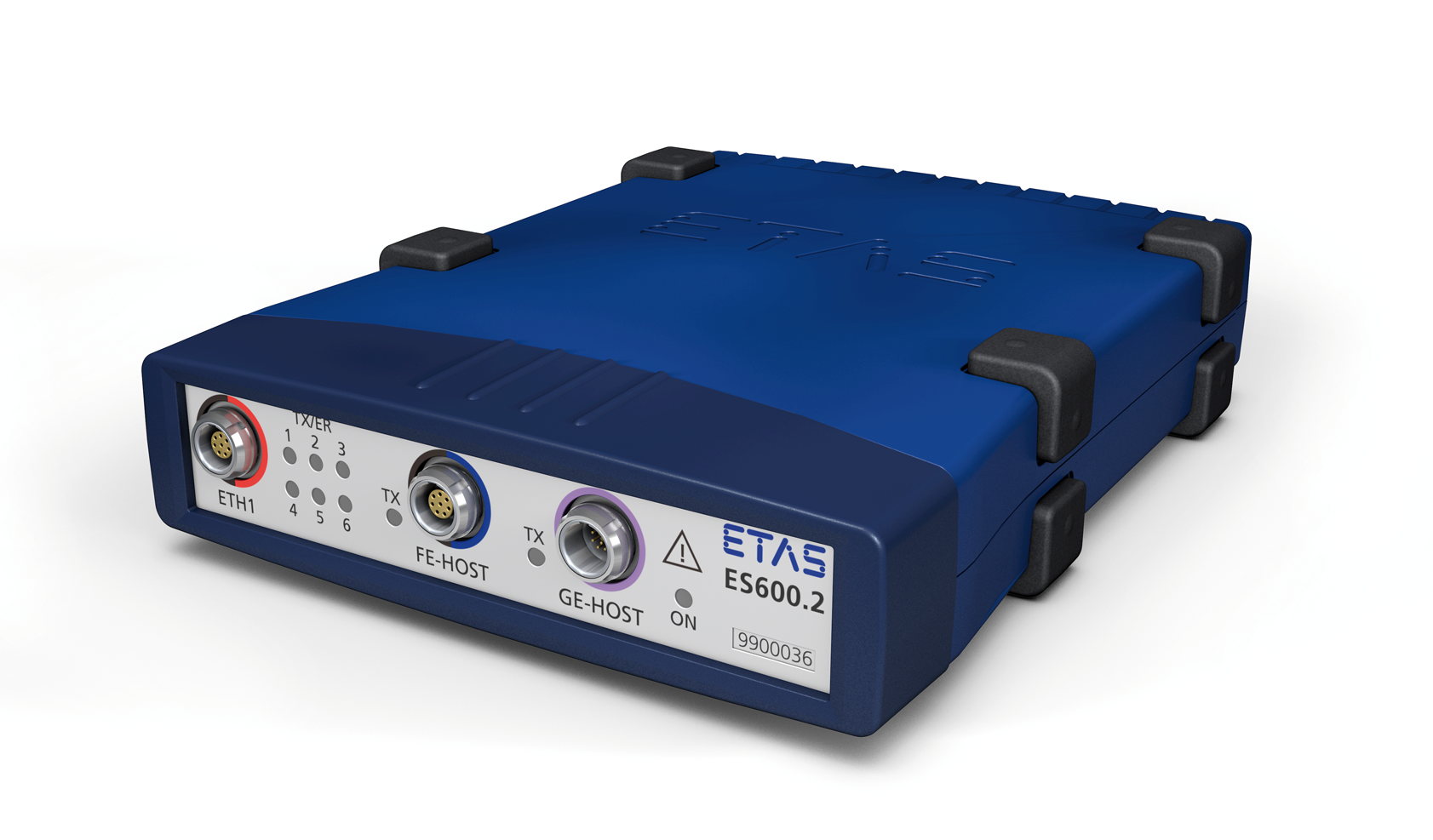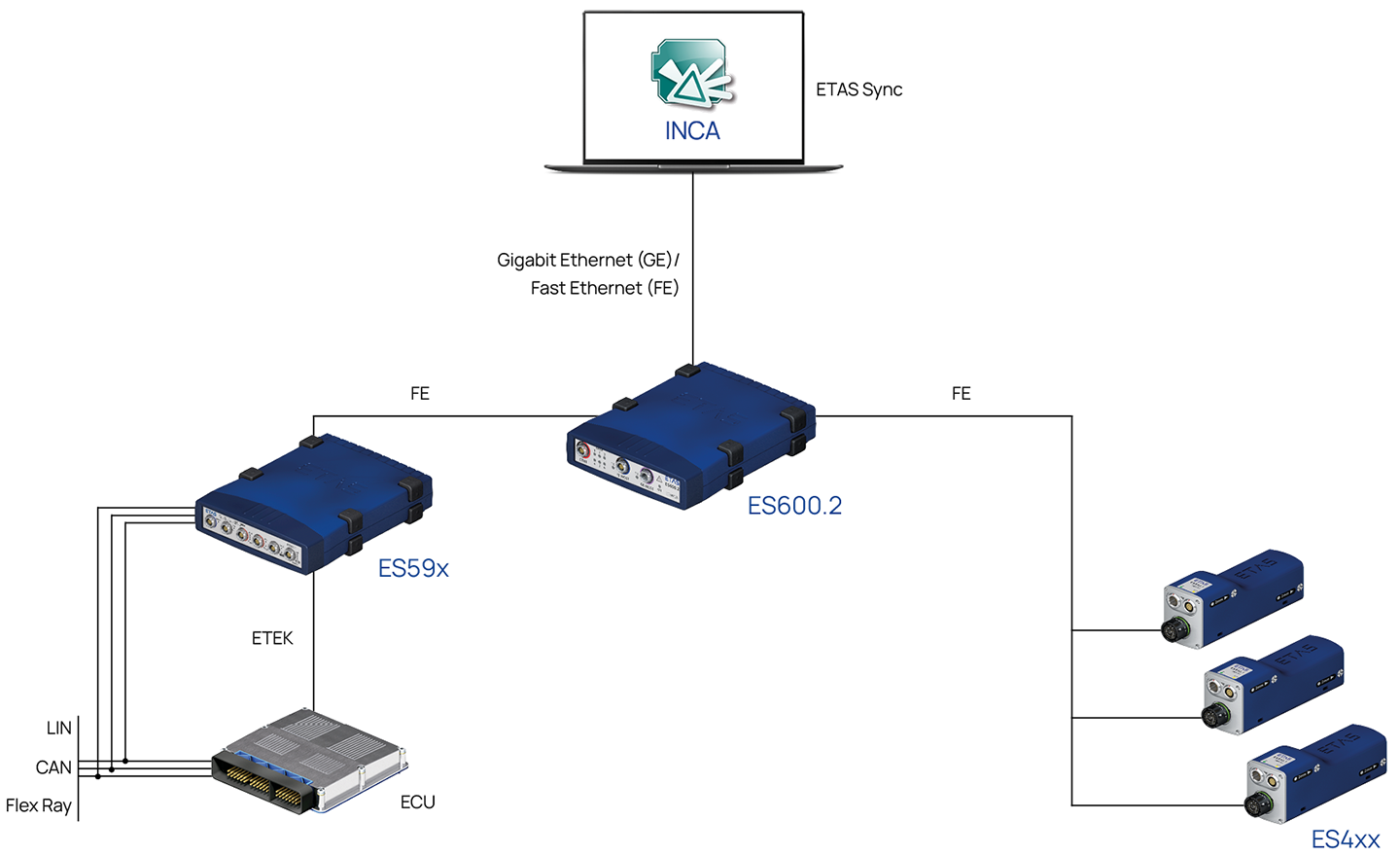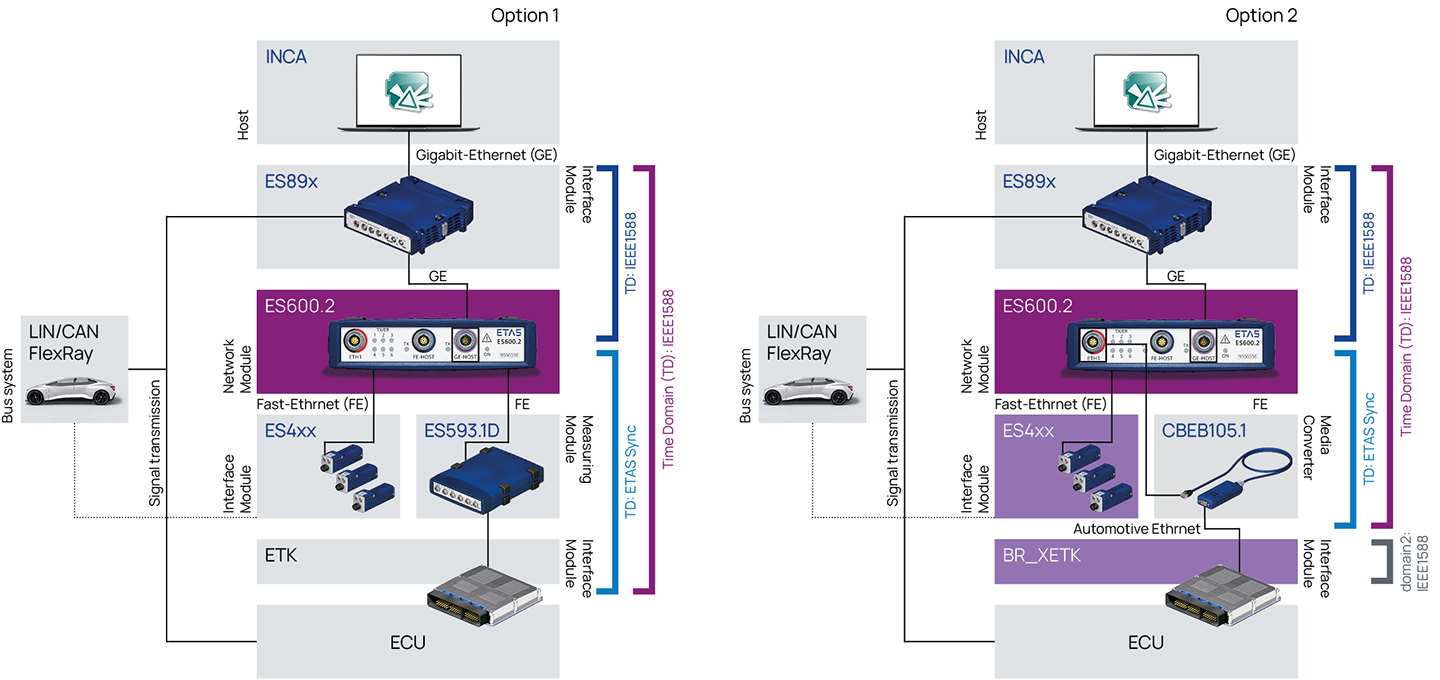
Up to six ETAS compact hardware modules – including additional ES600 modules – can be connected to an ES600 Network Module and synchronized and provided with power by it. On top of that, the ES600 modules synchronize the data collected via the individual channels of the connected measurement, interface or prototyping modules.
For example, with the help of the ES600.2 module you can connect up to four ECUs with an XETK interface to the ES910 Prototyping and Interface Module with which, on the test bench, values can be modified in the ECU and measured data acquired in short cycles.
ES600 modules help prevent the periodic divergence of different signals during a measurement: the linked modules act as a single measuring instrument, the timestamps of which fluctuate less than a microsecond from the specified cycle time. This guarantees temporal correlation of the data from different measuring channels at all times.
A series of LEDs continuously display the module’s operating and error status as well as the activity of the individual connections. To save electricity, the connected modules automatically switch to standby mode when no PC or drive recorder is hooked up. To avoid load peaks, the ES600 modules switch on the connected devices sequentially during startup.
Benefits
- Data transfer between the host application on the desktop / laptop PC, ES910 Prototyping and Interface Module, and multiple measurement, interface or prototyping modules, or XETK ECU interfaces via Gigabit Ethernet
- Six Fast Ethernet device ports with integrated power supply
- Multiple ES600.2 modules can be connected in series
- Precise time synchronization of all connected measuring channels with a precision of at least 1 μs
- Standby function
- Sequential switching-on of connected devices
- Status display for all devices and data transfers
- Stable, functional metal housing
Time synchronization in a Fast Ethernet group

The modules provide a global clock pulse for comparing the measurement channels in a module network.
The time synchronization unit of the ES600 master synchronizes the connected modules via the Ethernet lines. The slave modules adapt to the clock rate specified by the master module. The master module is always the module that is connected to the PC.
This excludes the possibility of a phase shift between the individual measurement signals, even when measurements are taken from different modules. The data of all the connected modules from the ES4xx, ES5xx, and ES6xx model ranges and from the (X)ETK is acquired synchronously with microsecond precision.
Time synchronization with the ES89x

If an ES89x is expanded with an ES600 module in a test setup, they will communicate with each other via a Gigabit Ethernet connection. In this domain, time synchronization takes place in accordance with the "IEEE 1588" protocol.
The downstream modules connected to the ES600 communicate via an Ethernet connection. The signals are synchronized in this domain in accordance with the "ETAS Sync" protocol. The ES600 serves as an interface between the two domains and ensures that the signals of the downstream modules are nevertheless displayed on the computer synchronously in accordance with the "IEEE 1588" protocol.
The data of all the connected modules from the ES4xx, ES5xx, and ES6xx model ranges and from the (X)ETK is acquired synchronously with microsecond precision.
Time synchronization with the ES89x and BR_XETK
If the (X)ETK is replaced by a BR_XETK in the above-mentioned test setup, the IEEE 1588 signal will not be forwarded via the Fast Ethernet port of the ES600. Instead, the two IEEE domains will be displayed separately on the computer. Within the individual domains, time synchronization will continue to take place with microsecond precision. The two time domains are synchronized by INCA with millisecond precision.
Wake-up and stand-by function
With use inside a vehicle, the energy consumption must be as low as possible, because the measuring equipment is supplied by a battery. For this reason, all the connections on the ES600 module are equipped with a link signal detector for an automatic electric power saving function.
The wake-up and stand-by function enables the module to switch automatically between the "Standby" and "On" operating states.
The ES600 and any ETAS modules connected to it will automatically switch to the "Standby" operating state if none of the connections receive link signals any longer or if the ES8xx or host computer is switched off or disconnected. As soon as link signals are received on at least one of the connections or the ES8xx or host computer is activated again, the module will automatically switch from standby to the "On" operating state and will automatically switch on connected ETAS modules in the measuring system.